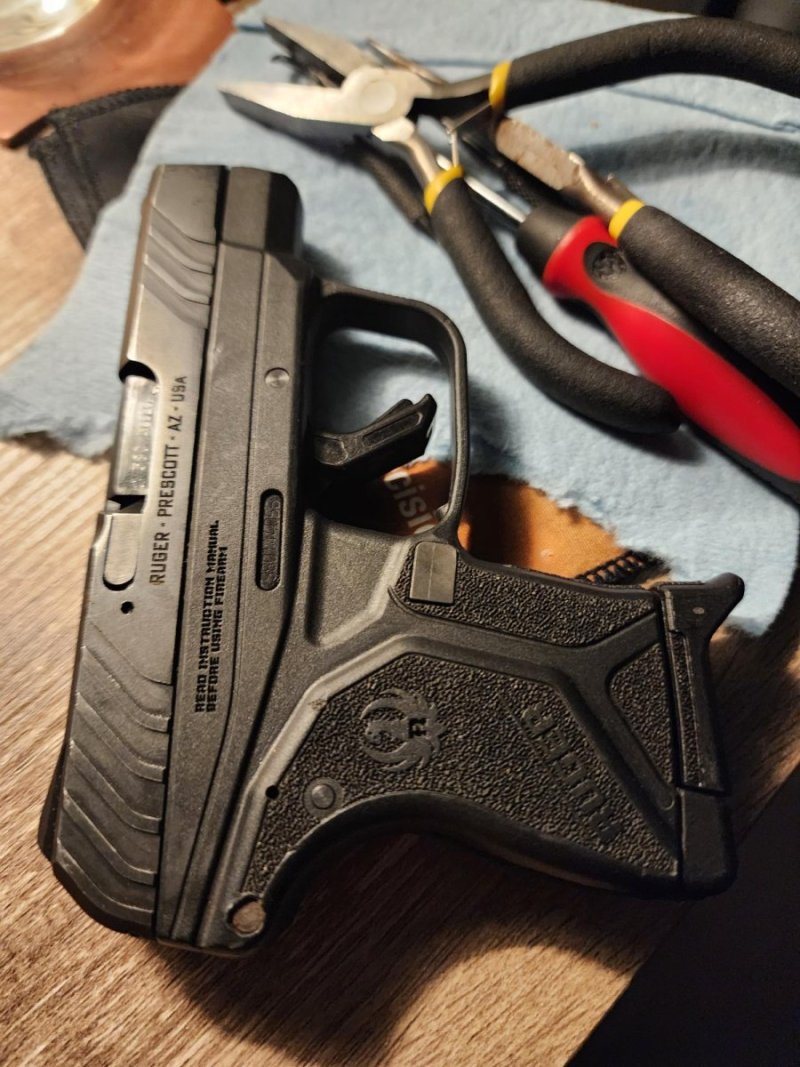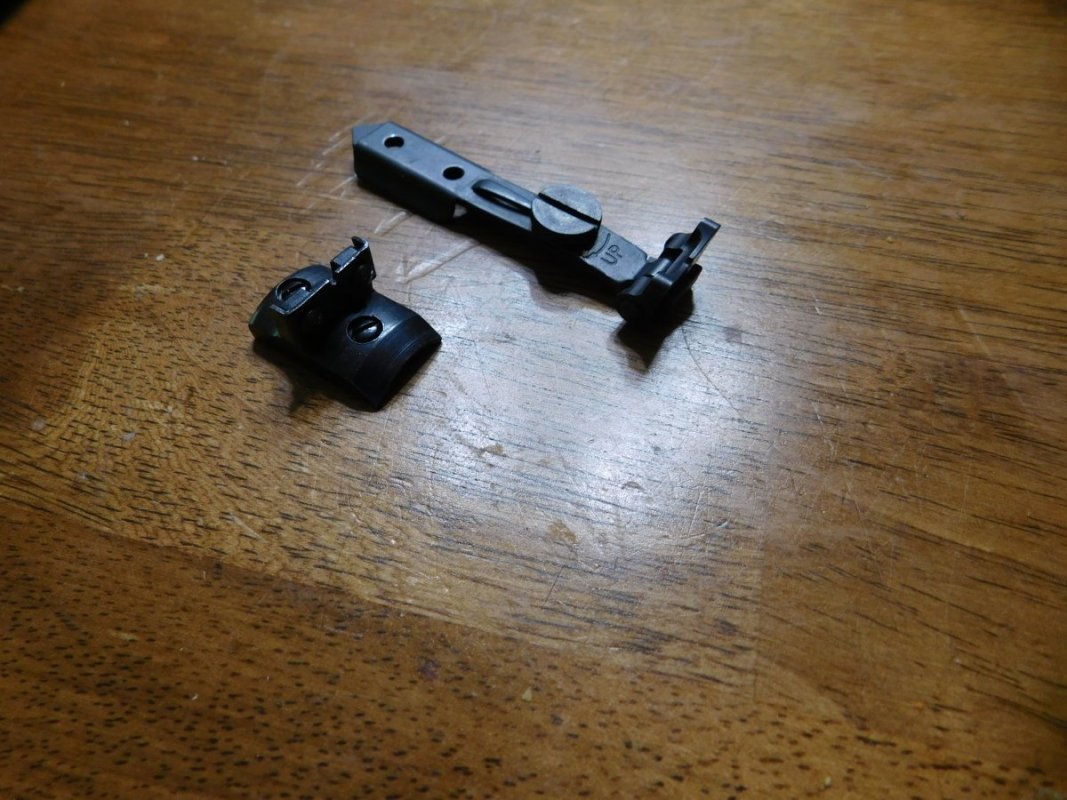Parts arrived. The open back Hogue grip is nice. Not too fat and tackey enough to feel secure with even a light grip. They fit pretty well too....not the easiest to install though. Still a long reach to that high Ruger hammer but its very easy to thumb it back and even easier to let go of the trigger and palm the hammer back with the off hand. I believe these will do fine and no choking down on a smaller slicker grip, should be about right for controllability with some arthritis in the hands and fingers. GoodWife even says she likes the grips...then snugged in the gun close to the right side for retention and palmed the hammer back with ease for the short shot.....incidently, we dry fired it about another 50 times and the refitted and staked recoil shield is holding in place just fine. But, a new recoil shield arrived and we'll see if we can straighten out the crosspin hole and get the new one properly retained for the long haul.



As for the new rear sight. I like it a lot. Very nice and a complete package for $15. The sight, blade (I need to add the white for the outline in the groove), screw, springs and cross pin. Best thing about it,.....it ain't broke and it ain't got all the color wore off of it.






As for the new rear sight. I like it a lot. Very nice and a complete package for $15. The sight, blade (I need to add the white for the outline in the groove), screw, springs and cross pin. Best thing about it,.....it ain't broke and it ain't got all the color wore off of it.






































